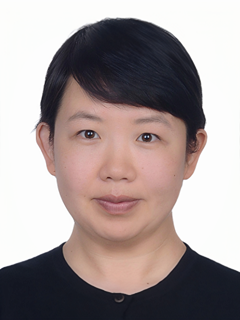Multiscale Structured Liquid Metal Elastomers for 3D Force Sensing Array
Time
15:00 PM, August 26, 2025 (Beijing Time, CST)Contact Us
Email: smdjournal@sciexplor.comSpeaker

Dr. Guolin Yun
CAS Key Laboratory of Mechanical Behavior and Design of Materials, Department of Modern Mechanics, University of Science and Technology of China, Hefei, Anhui, China.
Dr. Guolin Yun is a professor in the Department of Modern Mechanics at the University of Science and Technology of China. He received his B.S. in 2017 from the University of Science and Technology of China, and his Ph.D. in 2021 from the University of Wollongong, Australia. He worked as a postdoctoral fellow at the University of Science and Technology of China from 2021 to 2022, and the Royal Society Newton International Fellow and Senior Research Associate at the University of Cambridge from 2022 to 2024. His research focus is on the multiscale structured hybrid-filler elastomers with embedded liquid metals, as well as their applications in flexible sensors and stretchable electronics. To date, he has contributed 40 publications to this field with over 1700 citations and an H-index of 19.
Host

Dr. Ning Ma
School of Infrastructure Engineering, Dalian University of Technology, Dalian, Liaoning, China.
Dr. Ning Ma is an associate professor, doctoral supervisor of School of Infrastructure Engineering, Dalian University of Technology, and a member of the American Society of Civil Engineers (ASCE). Dr. Ma received her bachelor’s degree from the School of Civil Engineering, Harbin Institute of Technology in 2003, her master’s degree in Structural Engineering from Harbin Institute of Technology in 2005, and her Ph.D. in Disaster Prevention and Mitigation Engineering and Protective Engineering from Harbin Institute of Technology in 2010; she then worked as a postdoctoral fellow at the School of Civil Engineering, Dalian University of Technology from 2010 to 2012. Dr. Ma has worked as a faculty member of School of Infrastructure Engineering at DUT since 2012. She mainly engages in the research of steel structure seismic resistance, structural vibration control, smart materials and smart structural systems. She has presided over 5 national-level scientific research projects, and has participated in 4 national-level projects as a key member. So far, she has published more than 40 peer-reviewed papers, and has been authorized 4 national invention patents.
Introduction
Flexible conductive composites combine the conductivity of fillers with the flexibility of polymers, and are therefore widely used in flexible sensors and soft robotics. However, most conventional composites face performance deficiencies such as low sensitivity, limited functionality, and poor conductivity when stretched, which restricts their applications in soft devices. Although state of the art flexible force sensors shows high sensitivity, artificial tactile sensing to differentiate normal and tangential forces is still underdeveloped, especially when mimicking human fingers for sensing of complex tactile information such as sliding.In this talk, I will introduce a family of multiscale structured stretchable composites with embedded liquid metals that addressing these challenges. Specifically, we proposed a liquid metal hybrid elastomer with unconventional strain response, with a several-magnitude increase in conductivity under any mechanical loading. Furthermore, we created composites with anisotropic piezoresistivity and high sensitivity through multi-scale structured design. On this basis, we present a liquid-metal enabled 3D force sensing array with high pressure sensitivity, wide pressure sensing range, and normal-tangential force decoupling capability. The high-performance multiple tactile sensation capability is owing to its mechanical structure designs from nano- to macro- scales. This innovation achieves a high sensitivity of 100/kPa over a wide linear range of 500 kPa. Crucially, its pyramidal shuface structure mimicking human epidermis can decouple the normal and shear forces, endowing it with 3D force direction recognition, slip detection and roughness sensing capabilities. We integrate the sensing array on a robotic gripper to achieve intelligent grasping with dynamic force adjustment for unknown objects. Our work provides a practical solution to bring the tactile sensation of humans to e-skins, opening opportunities for unprecedented improvements in prosthetics, industrial grippers and soft robotics.
Presentation
Presentation
414



